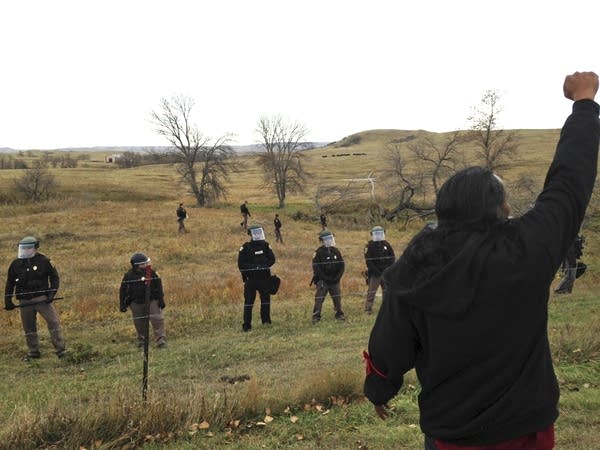Dakota Access pipeline cops push back on accusations of brutality

A Dakota Access pipeline protester defies law enforcement officers who are trying to force them from a camp on private land in the path of pipeline construction.
James MacPherson | AP file
Go Deeper.
Create an account or log in to save stories.
Like this?
Thanks for liking this story! We have added it to a list of your favorite stories.


